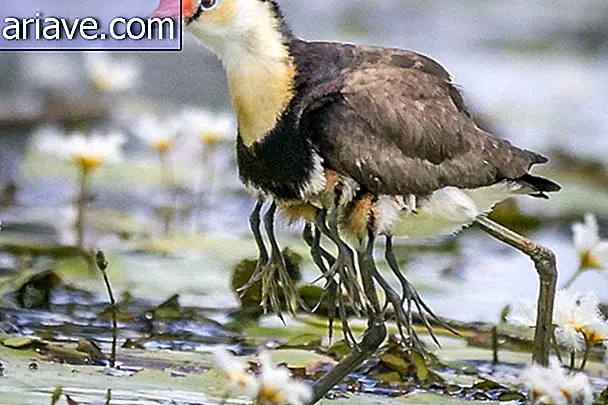Climate Change May Cause Mass Extinction
Millions of years ago, an animal among a multitude of other beings somehow became different. He stood out for his unusual intelligence - what we have come to call rationality. He was a being who was aware of himself and the things he knew. Much time has passed and this animal has become the dominant species on the planet, having the ability to alter everything around it.
We are talking about the human being himself, of course, and the very high degree of interference we exert on nature. Two studies by Science magazine published this week show that man-made climate change will scratch one-sixth of the existing animal species off the map and that building buildings, power lines, antennas, weather vane Wind energy and other structures that take up space in the sky kill millions of living beings each year.

Millions of damned species
Given that there are around 8 million species of animals on Earth, more than 1.3 million are expected to disappear with the gradual rise in temperature caused by the massive emission of carbon dioxide into the atmosphere. The study shows that even a slight increase in average temperatures, such as 2 ° C, can double the risk of extinction for a number of animals from 2.8% to 5.2%. This rises to an impressive 16% if the average temperature rises 4.3 ° C.
Animals that occupy air spaces are also extremely affected by all sorts of tall buildings. In addition to direct physical damage, they cause changes in migratory patterns, which cause profound evil among certain species. Air vehicles such as airplanes and helicopters are also to blame for this carnage, not to mention the deaths of humans caused by crashes between aircraft and birds, for example.
The importance of airspace as a habitat has only recently been recognized by scholars. With the gradual increase in air occupancy by new technological devices, the prospect of improving this situation, without any intervention, drops to almost zero.

Minimizing the effects
Several actions must be taken to minimize the effect of sky occupation. Large cities have been committed to dimming their lights during migratory movements of some bird species - which are being properly monitored and mapped - and trying to make their tall structures more visible to birds.
Biodiversity is of crucial importance to our economy, culture, health and food. This drastic decrease in species numbers may not only be drastic for extinct animals, but also all survivors, especially ourselves. The pursuit of reducing the emission of harmful gases into the atmosphere should be just one of several measures necessary for the continued well-being of humans and all the species on which we depend and which depend on us.











